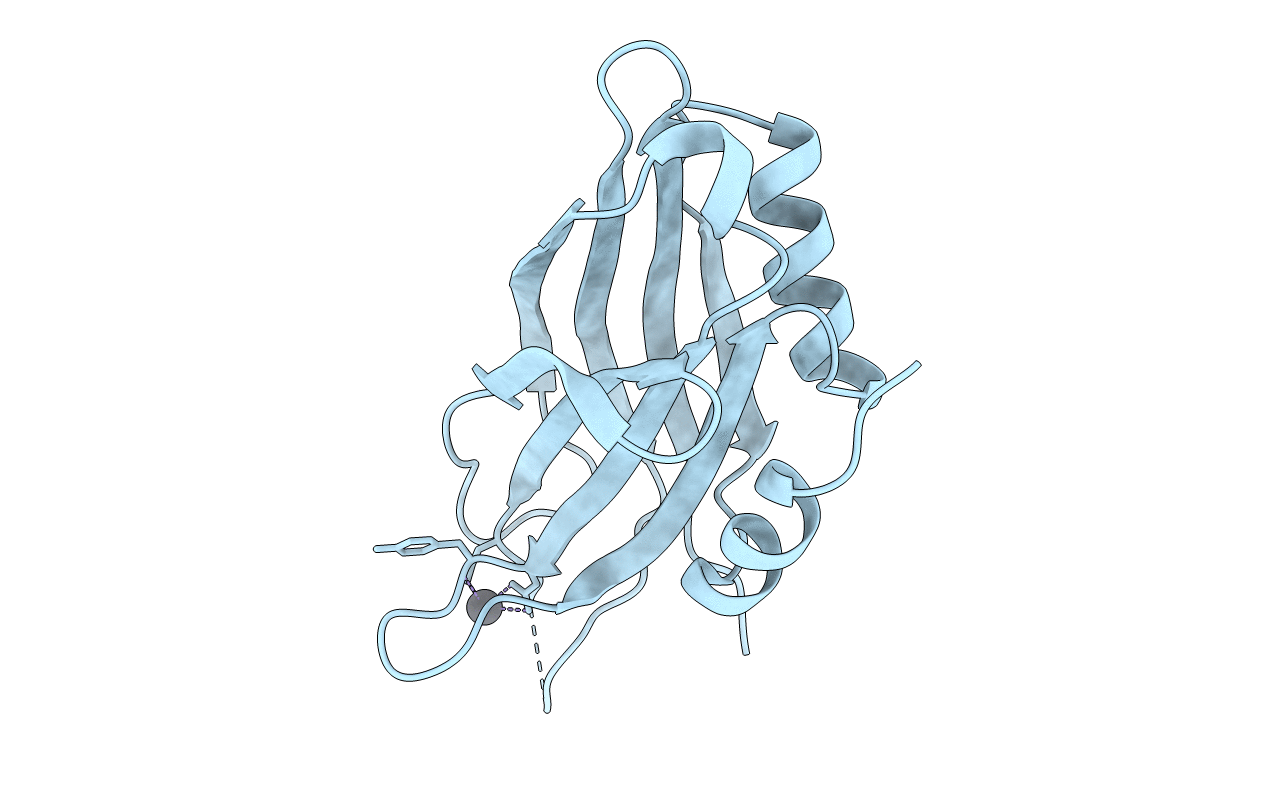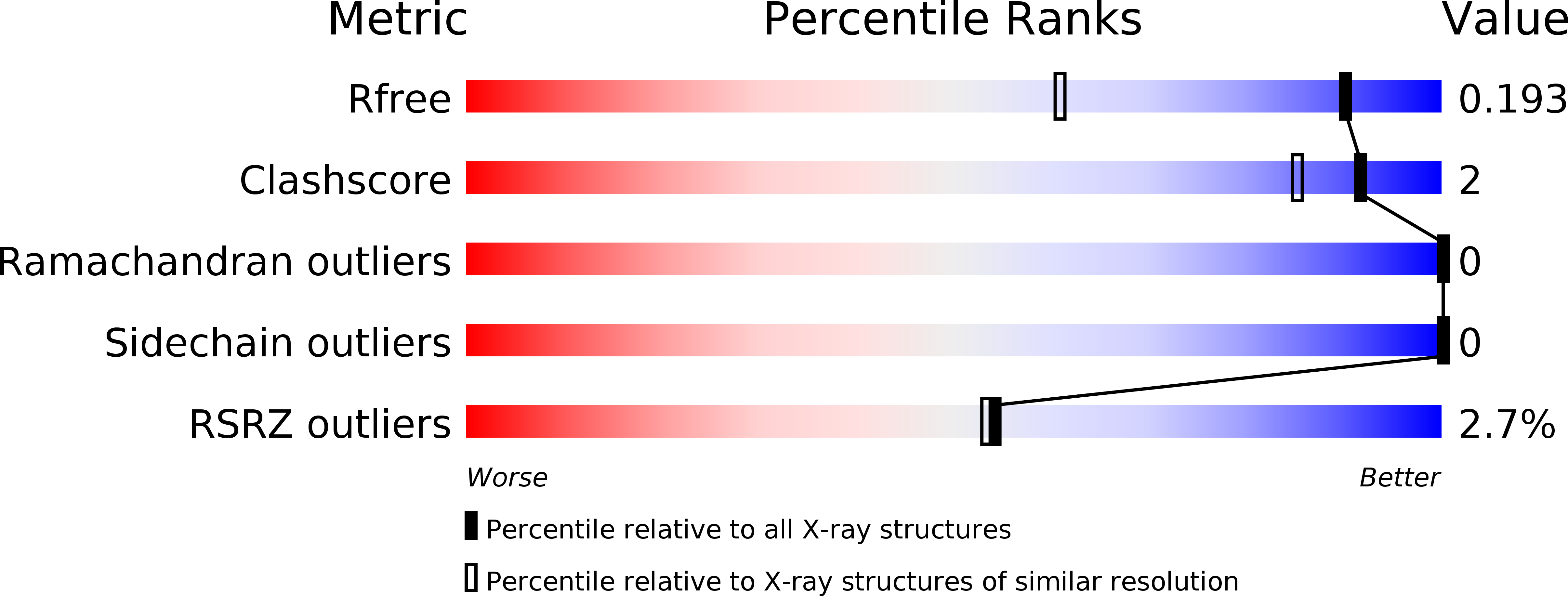
Deposition Date
2017-04-07
Release Date
2018-04-11
Last Version Date
2023-10-04
Entry Detail
PDB ID:
5VFF
Keywords:
Title:
Synaptotagmin 1 C2B domain, lead-bound (low occupancy)
Biological Source:
Source Organism:
Mus musculus (Taxon ID: 10090)
Host Organism:
Method Details:
Experimental Method:
Resolution:
1.41 Å
R-Value Free:
0.19
R-Value Work:
0.15
R-Value Observed:
0.15
Space Group:
P 21 21 21


